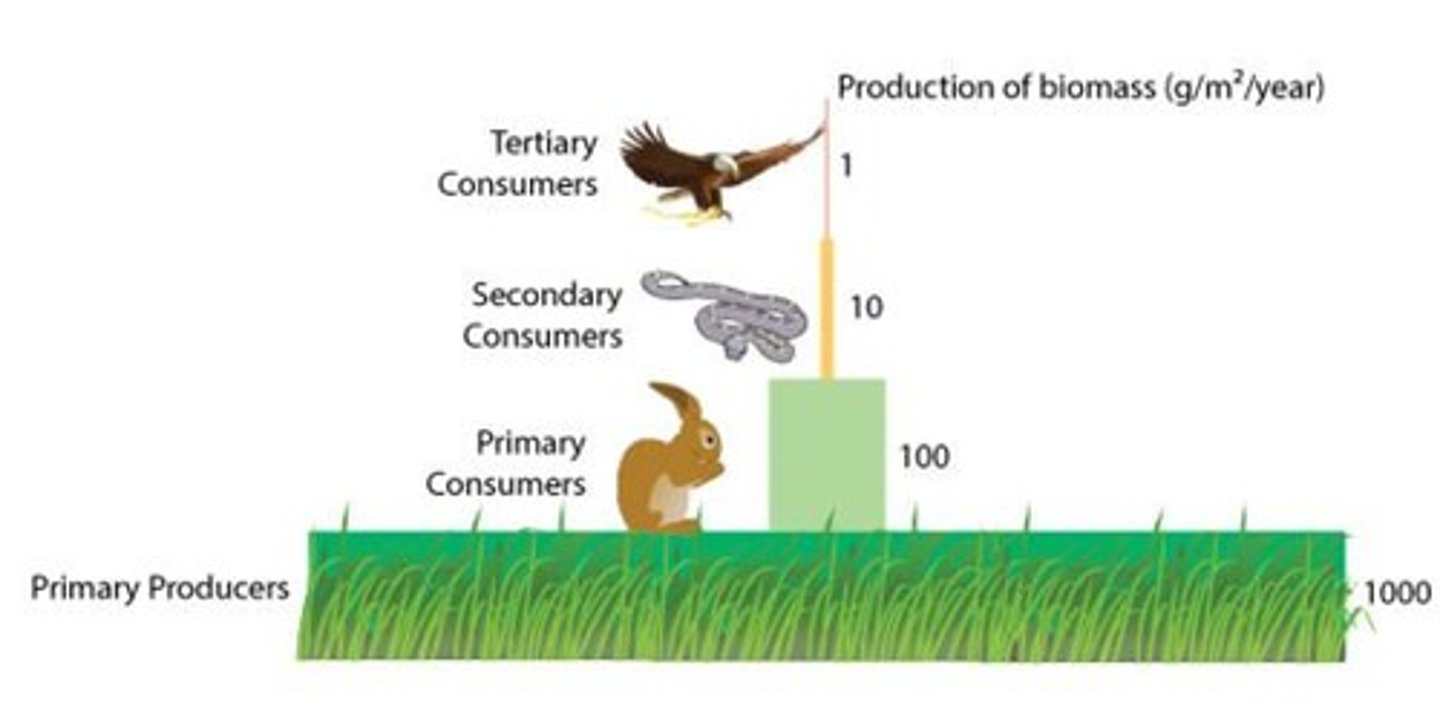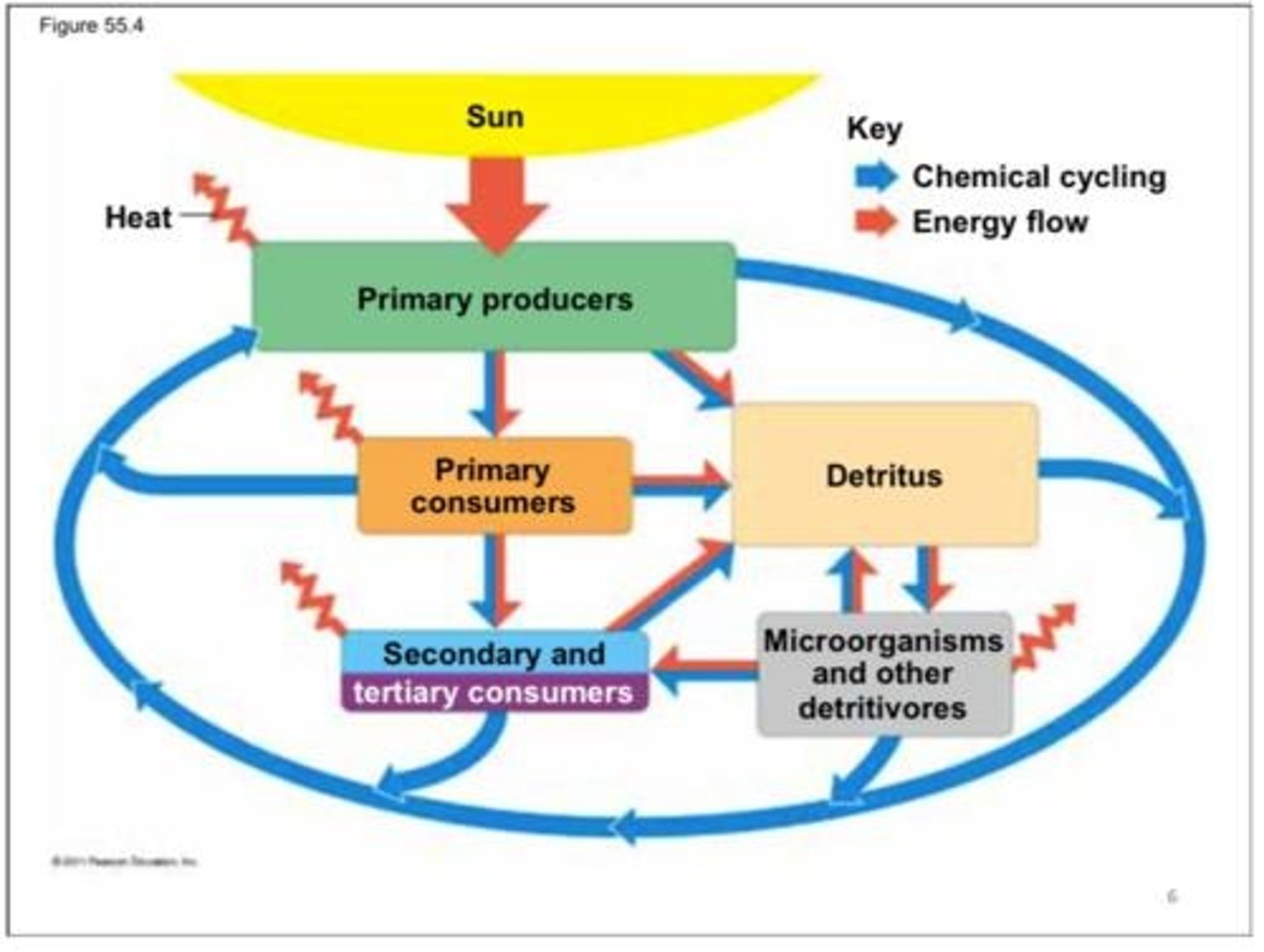Ecology and Biosphere Study Guide for Exam 4
1/41
There's no tags or description
Looks like no tags are added yet.
Name | Mastery | Learn | Test | Matching | Spaced |
|---|
No study sessions yet.
42 Terms
Organismal ecology
Study of individual organisms in their environment.
Population ecology
Study of population dynamics and growth factors.
Community
Populations of different species interacting together.
Ecosystem
Communities and abiotic factors interacting.
Biogeography
Distribution of organisms influenced by abiotic factors.
Latitude
Geographical coordinate affecting climate and biodiversity.
Rain Shadow
Area with reduced rainfall due to mountains.
Terrestrial Biomes
Regions defined by climate and predominant vegetation.
Tropical Forest
Biome with high biodiversity and rainfall.
Desert
Dry biome with minimal precipitation.
Savana
Grassland biome with scattered trees.
Chaparral
Biome with hot, dry summers and mild, wet winters.
Northern Coniferous Forest
Forest biome dominated by conifer trees.
Tundra
Cold biome with permafrost and low vegetation.
Littoral zone
Nearshore area of aquatic biomes.
Limnetic zone
Open water area in lakes.
Photic zone
Light-penetrated layer of aquatic ecosystems.
Aphotic zone
Deep water layer with no light.
Benthic zone
Bottom layer of aquatic ecosystems.
Pelagic zone
Open ocean area away from the coast.
Intertidal zone
Area between high and low tide.
Population
Group of individuals of the same species.
Demography
Statistical study of population dynamics.
Population density
Number of individuals per unit area.
Damuth's law
Larger species have lower population densities.
Survival curves
Graph showing survival rates at different ages.
Exponential growth
Population growth without resource limitations.
Carrying capacity
Maximum sustainable population size in an environment.
Ecological footprint
Land area required to support an individual.
Competitive Exclusion Principle
Two species cannot occupy the same niche.
Keystone species
Species crucial for maintaining ecosystem balance.
Invasive species
Non-native species threatening local ecosystems.
Ecosystem Equilibrium
Balance of organisms and environment.
Trophic Level
Position in a food chain.

Food web
Complex network of feeding relationships.

Trophic Efficiency
Energy transfer efficiency between trophic levels.
Biodiversity
Variety of life forms in an ecosystem.
Genetic diversity
Variation in genetic characteristics within a species.
Species diversity
Variety of different species in an ecosystem.
Ecosystem diversity
Variety of ecosystems in a region.
Soil Horizons
Layers of soil with distinct characteristics.
Sustainable agriculture
Farming practices that maintain environmental health.